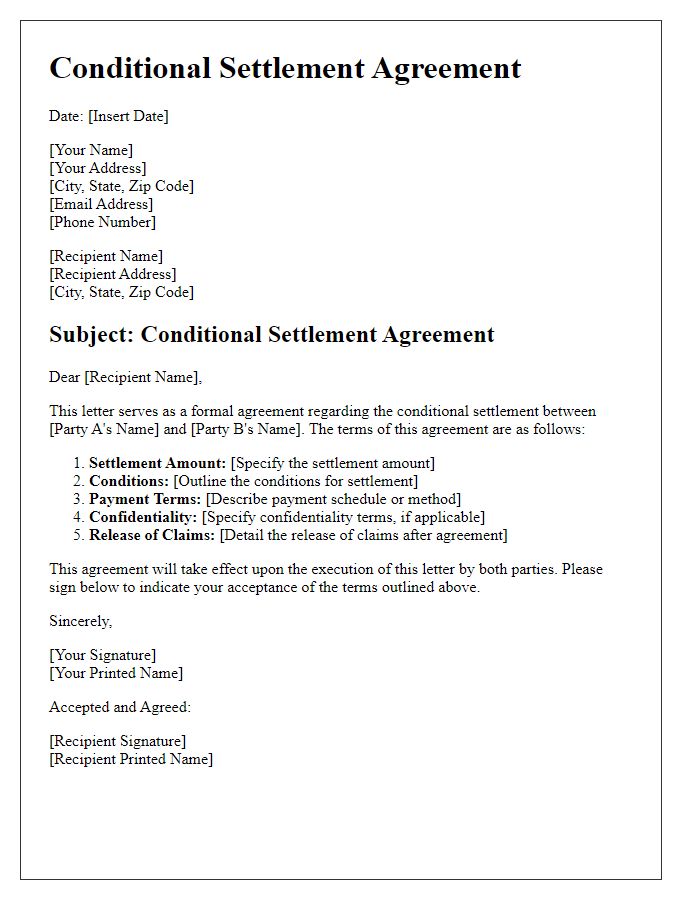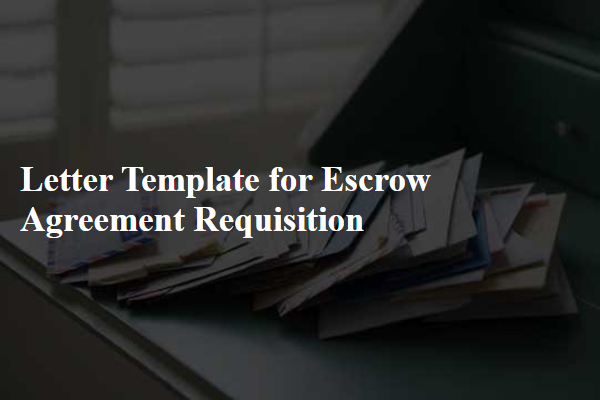When it comes to settling disputes, a well-crafted letter can make all the difference in reaching a peaceful resolution. A settlement agreement not only clarifies the terms but also safeguards the interests of both parties involved. In this article, we'll guide you through the essential elements of a settlement letter to streamline the process and eliminate misunderstandings. So, grab a cup of coffee and let's dive into how you can prepare an effective settlement agreement letter that truly reflects your intentions!

Parties involved
In the context of settlement agreements, identifying the parties involved is crucial. Parties typically refer to individuals, entities, or organizations entering into a legally binding contract to resolve disputes without litigation. For instance, in a personal injury case involving Plaintiff John Doe, a resident of Los Angeles seeking compensation for injuries sustained in a vehicular accident, and Defendant ABC Insurance Company based in San Francisco, responsible for covering the driver's liability. Each party should be clearly defined, including relevant details such as legal counsel representation, specific roles in the agreement, and jurisdictional context to ensure clarity and enforceability in the settlement process. Proper identification helps in averting future disputes and fosters a clear understanding of each party's obligations and rights under the agreement.
Settlement terms
A settlement agreement typically encompasses various key terms specifically designed to resolve disputes between parties amicably. Essential components include identification of the parties involved, the statement of the dispute, and the terms of the settlement such as monetary compensation (amount specified, often with a payment schedule). Confidentiality clauses may also be included to protect sensitive information, specifying that details of the settlement remain undisclosed. Additionally, the agreement often outlines the mutual release of claims, preventing future legal actions related to the settled dispute. Governing law is crucial, indicating which jurisdiction's law will apply (e.g., New York State law), and execution terms typically include signatures from all parties, ensuring legal enforceability upon finalization. Furthermore, deadlines for compliance with settlement terms are commonly specified, promoting accountability and timely resolution.
Confidentiality clause
A confidentiality clause in a settlement agreement serves to protect sensitive information shared between parties involved. Such contracts often outline terms of confidentiality regarding the nature of the dispute, the details of the settlement, and any financial considerations involved. For instance, parties may agree not to disclose the existence or terms of the settlement to third parties unless required by law, reflecting the necessity of privacy in legal resolutions. Additionally, breaches of this clause can lead to legal repercussions such as penalties or enforcement actions, underlining its importance in maintaining the integrity of the agreement and safeguarding each party's interests.
Release of claims
Releasing claims involves relinquishing any potential legal actions related to a specific dispute, often formalized in a settlement agreement. This document typically includes detailed provisions outlining the parties involved, the nature of the dispute, and explicitly states the scope of the claims being released. For instance, in a business context, a release of claims could encompass various disputes, such as breaches of contract or employment disagreements, between two corporations, such as Company A and Company B, located in New York and California respectively. The settlement terms might also address financial compensations, confidentiality clauses, and the acknowledgment of the full and final settlement of all related matters, ensuring that neither party can pursue further legal actions after the agreement is executed.
Governing law and jurisdiction
This document establishes the governing law and jurisdiction for the settlement agreement between the involved parties. The laws of the State of California (specific reference to California Civil Code sections 1541 et seq., which govern settlements) will prevail in interpreting this agreement. Both parties recognize that any disputes arising from this agreement will be adjudicated in the Superior Court of Los Angeles County, California, or, if applicable, in the appropriate federal court located in the Central District of California. This choice of jurisdiction is based on the significance of both parties' business operations within California and the mutual agreement to ensure a fair and efficient resolution process.













Comments